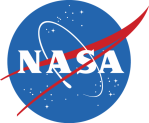The U.S. Department of Homeland Security (DHS) announces two opportunities, see
DHS Scholarship Program
Eligibility: undergraduate students , must be U.S. citizens
Funding available for fall 2010:
- full tuition and monthly stipends
- 10-week summer internships at federal research facilities or DHS Centers of Excellence
Application Deadline: January 5, 2010
DHS HS-STEM Summer Internship Program
Eligibility: undergraduate students , must be U.S. citizens
Funding available for summer 2010
- 10-week summer research experiences at federal research facilities
- $500 weekly stipends plus transportation expenses to/from the internship location
Application Deadline: January 5, 2010
DHS Summer Research Team Program for Minority Serving Institutions
Description: Early career faculty teamed with undergraduate and graduate students
Eligibility: undergraduate and graduate students and faculty, must be U.S. citizens
Funding available: for summer 2010
- 10-week summer research experiences at DHS Centers of Excellence
- Stipends plus transportation expenses to/from the internship location for faculty and students
Application Deadline: February 1, 2010
If you have questions:
Oak Ridge Institute for Science and Education
Science Education Programs
P O Box 117
Oak Ridge, TN 37831
 NASA is accepting applications from students at U.S. colleges and universities who want to send their experiments to the edge of space on a high-flying scientific balloon.
NASA is accepting applications from students at U.S. colleges and universities who want to send their experiments to the edge of space on a high-flying scientific balloon.